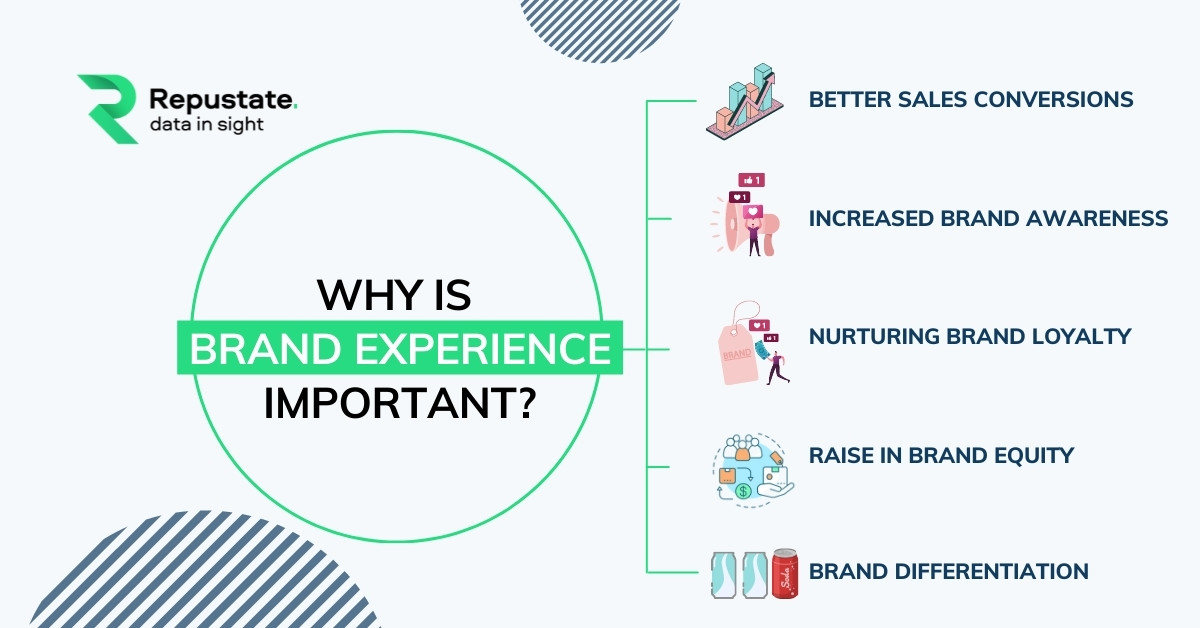
Brand experience is the overall sentiment a customer feels with regard to his engagement with a brand. It is one of the biggest contributors to customer acquisition and brand loyalty. In this article, we talk about what brand experience means in new-age marketing techniques and what machine learning (ML) processes are involved in brand experience analytics. We will also explore four customer brand experience case studies that showcase the strategic insights you can extract with the help of an AI-driven sentiment analysis platform for driving business growth through effective branding.
What Is Brand Experience?
As the name suggests, brand experience is the sum of all the feelings that entail during a consumer’s engagement with a brand during the buying cycle. As a marketing function, brand experience is based on product experience, customer experience, and brand management, and therefore is often-times used to predict consumer behavior. That’s why you can identify key opportunities for brand amplification through voice of customer analysis.
On an overall business level, customer brand experience constitutes brand involvement, brand personality, the customer’s personal feelings - delight, passion, or familiarity - with a brand, which ultimately translates into sales conversions.
Why Is Brand Experience Important?
A powerful and engaging brand experience can lead to key advantages for both a growing business and an established one. Some of them are as below.

Importance of brand experience
1. Better sales conversions
A great brand experience leads to increased sales conversions. Take, for example, the iconic Lufthansa. Word-of-mouth referrals yield better results as people talk about their positive experience with a brand and this encourages other customers to trust the brand and make purchases.
2. Increased brand awareness
When a customer experiences the brand in a way that touches them, they are happy to leave positive remarks on your social brand channels, and refer friends and family. Some even post comments and user-generated videos on their social profiles to mention their experience, thus creating a buzz for your brand.
3. Nurturing brand loyalty
A meaningful brand experience encourages customer loyalty. Customer experience analysis can tell you how connected a consumer feels to a brand, which can give you the direction to develop strategies to build a brand strategy that fosters brand loyalty.
How Can We Analyze Brand Experience?
We analyze customer brand experience by identifying and analyzing sentiment in customer experience data through machine learning algorithms. This data is gathered through various sources like social media listening, review platforms, blogs, and ofcourse, survey data.
An AI-driven customer experience platform analyzes brand experience using many ML subtasks such as natural language processing (NLP), named entity recognition (NER), etc., in the following steps.
Step 1 - Data collection
Customer experience data is first gathered from relevant sources. This could be directly using Live APIs for social media such as for Instagram, Facebook, TikTok, etc. Or, you can also manually upload it onto the sentiment analysis platform in an excel file. Once the relevant data is collated, it is annotated.
Step 2 - Data processing
In the second step, all the data that has been cleaned and prepped in the previous step is processed. Since the data can be in many formats, various ML algorithms work in tandem to process it in order to extract relevant information. These are, as follow.
- Audio - All podcast data and social media videos are transcribed through speech to text software so that it is all turned into a text format
- Captions - ML algorithms engage in identifying and extracting text from any caption overlays that may occur in the data using video content analysis
- Images - The platform captures images in the data, say from Facebook or Instagram, or text data through optical character recognition (OCR), which it maps with its knowledge graph for relevancy
- Logos - All logos that may occur in a video or image are identified, analyzed, and extracted
- Text - All text data from comments, reviews, etc. is assimilated including all the audio files that were transcribed. It is important to note that Repustate IQ’s sentiment analysis platform for customer experience analytics also extracts emojis and hashtags from social media like Twitter or TikTok as well. This ensures that emojis are never ignored during analysis as that could lead to false positives or negatives.
Step 3 - Data analysis
There are various elements to analyzing the brand experience data, the key of which are listed below.
- Training the model - The first and foremost element is the data that is used to train the sentiment analysis model. This dataset is pre-processed, manually labeled, and then applied to train the model. Once the results are received, they are compared against a validation dataset, which is data that is correctly labeled. This process is repeated a couple of times, which eventually leads to the most optimal results. The model is now ready to be used.
- Multilingual data analysis - Part-of-speech taggers are used for every language that is automatically detected in the data by the algorithms. Repustate has speech taggers for each of the 23 languages it conducts sentiment analysis in. Using native language models to analyze different languages leads to more accurate insights as the meanings are not lost in translation.
- Custom tagging - Custom tags are created for various aspects and themes that are found in the customer brand experience data. Once the model has been trained, it will automatically segregate text based on these custom-created tags.
- Topic Classification - The topic classifier attaches a theme to a text such as price, food, convenience, etc.
- Sentiment Analysis - The sentiment analysis API isolates each aspect and theme, and processes it for sentiment. It then assigns a sentiment score in the range of -1 to +1. Ultimately, once all the aspects are analyzed for sentiment, an overall sentiment score of the brand experience is created in percentile form.



























